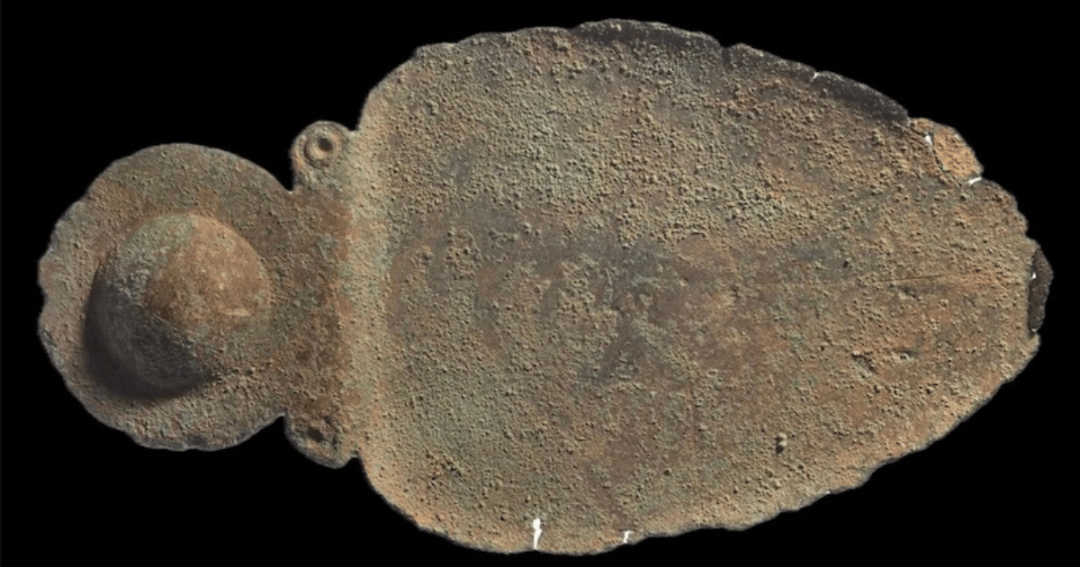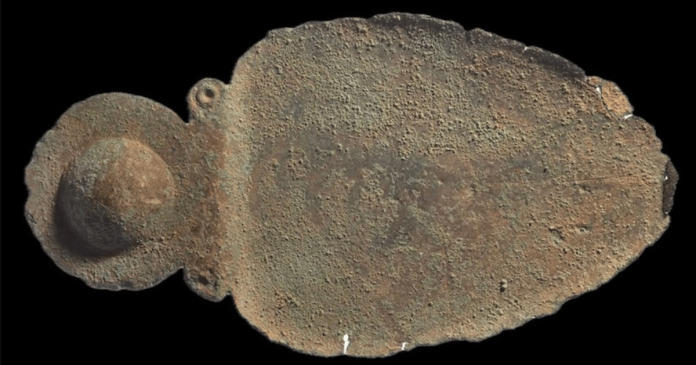A remarkable 2,000-year-old bronze spoon discovered on the Isle of Man provides rare evidence of ancient ritualistic practices in Europe. A local resident found the artifact on private land. Experts believe an Iron Age shaman used it for divination.

A Rare and Significant Find
Shaped like a strawberry, the bronze spoon originated between 400 BCE and 100 BCE. Researchers have documented only 28 similar examples across Europe. Experts suggest it may have played a role in interpreting the future through ritualistic means.
Allison Fox, Archaeology Curator at Manx National Heritage, emphasized the significance of the discovery: “Though referred to as a ‘spoon,’ this is an extraordinary find that indicates potential ritual activity on the Isle of Man.”
The Spoons Use?
While its exact purpose remains uncertain, the spoon’s interior features two engraved lines forming a cross at the base, dividing the bowl into four distinct sections.
“It is believed that a liquid—potentially water, beer, or even blood—was poured into the cross-marked spoon,” Fox explained. “The way the liquid flowed into specific compartments may have been interpreted as a message about the future.”
Archaeologists have found similar ritual spoons in Britain, Ireland, and France. Several examples in the British Museum indicate that people often discovered these objects in pairs. Typically, one spoon features a cross design, while the other has a small hole. The holed spoon likely dripped blood onto the marked spoon, further enhancing its divinatory function.
The British Museum reports that archaeologists found most of these spoons in graves.This indicates they were personal possessions, though not necessarily used in burial rites.
The First of Its Kind on the Isle of Man
This discovery represents the first time anyone has uncovered such an artifact on the Isle of Man. This adds the island to the map of Iron Age ritual activity.
“The discovery firmly places the Isle of Man within the broader context of ritual practices in Iron Age Europe,” Fox noted.
The finder and landowner generously donated the artifact to the Manx National Collections. It is now on display at the House of Manannan Museum on the island’s west coast, offering the public a rare glimpse into the mystical traditions of the past.

